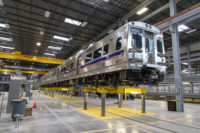USGBC Ranks Colorado 8th in U.S. for LEED Projects
The U.S. Green Building Council recently ranked Colorado eighth in the nation in LEED projects. The 2013 ranking was down from third overall in 2012 and second in 2011.
But the state certified 124 LEED projects last year, compared to only 99 in 2012, representing more than eight million sq ft of real estate, says Angie Fyfe, USGBC Colorado executive director.
“We had lower LEED [certified] square footage here last year, which is how the council ranks states, but Colorado had a 25% increase in the number of LEED projects certified,” Fyfe says.
The LEED approval process can often take 2.5 years from registration to certification, Fyfe says. So many of the recently certified projects would have likely started in 2010, during the latter part of the recession, when more publicly owned projects were being built.
The state now has more than 400 projects in the USGBC approval pipeline, many of them private-sector jobs, she adds. The largest one currently pending certification is the $51-million University of Colorado Boulder Recreation Center upgrade, which is aiming for LEED Platinum. The Colorado Convention Center is also seeking certification under the LEED for Existing Buildings category for its two million-plus sq ft of space, which would make it the largest building in the state to be LEED certified, Fyfe says.
Some owners have never supported LEED certification as a project goal, Fyfe says, but it is “becoming more of an imperative on some types of projects.”
According to the Downtown Denver Partnership, 53% of the total square footage in Denver buildings is LEED or Energy Star certified, or both. Fyfe attributes the growth of green projects to “an industry that is more interested now in human health and well-being,” she says.
But contractors and designers should be preparing their staffs for the coming of LEED v. 4, which will launch June 1, 2015, Fyfe says. “It will place more emphasis on the materials being used, the products and their impact on end-users.”




